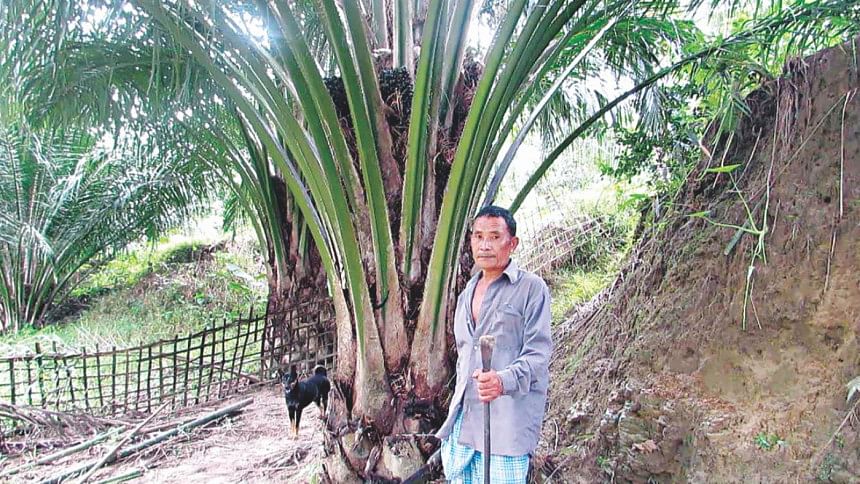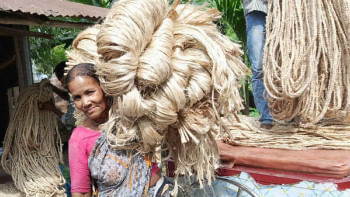The lure of palm oil

African oil palms have been used for producing edible palm oil for millennia. Archaeological evidence suggests the tree was imported to Ancient Egypt from its native West Africa by around 3,000 BC. Nowadays palm oil is used worldwide, with Indonesia and Malaysia the largest producers. There, the palm oil industry has courted controversy for causing widespread deforestation, the collapse of biodiversity and significant greenhouse gas emissions as forests are burnt to make way for plantations.
Over the last decade a handful of Khagrachhari farmers have also invested in oil palm plantations but as yet there has been little success in establishing a nascent industry due to the lack of a reliable processing plant for the oil, which is derived from the pulp of the palm's fruit. Palm oil has the potential to be a lucrative agricultural product. But if Indonesia's experience is any guide, unrestrained development of the industry can lead to environmental disaster.
“I planted oil palms on three acres nine years ago,” says Ahad Ali, a farmer from Matiranga upazila. His is one of around fifty large and small plantations in the district. “Most of the trees grew fruit but I have not earned any income yet. If I had chosen a different crop I could have made a lot of money. Without a palm oil factory in Khagrachhari palm plantations will never be profitable.” He hopes with government initiative an efficient processing plant can be established.
Similarly, Rabindra Chakma from Panchhari upazila planted oil palms on his land seven years ago. “There hasn't been any assistance from the agriculture extension department,” he says, “but since last year some of the palms have started to yield fruit.”
Last year an oil processing plant was set up in the Bangladesh Small and Cottage Industries Corporation (BSCIC) area in Khagrachhari Sadar upazila. However, the plant run by Karnaphuli Golden Palm Ltd faced many difficulties, not least a lack of reliable electricity supply. After purchasing some palm fruits from growers they were unable to continue. The plant has since closed.
There are no other potential buyers for the palm.
“There are enough plantations in the district to supply the raw material required by the factory,” says the factory's managing director, Ali Akbar. “But we didn't have the most efficient machinery. We hope that next year we can re-establish the factory using more modern technology.”
“If palm oil trees were properly cultivated and the right processing facilities made available, it would be profitable,” says Tarun Bhattacharya, deputy director of the department of agricultural extension in Khagrachhari.
Oil palm plantations currently cover 137 hectares in the district.

 For all latest news, follow The Daily Star's Google News channel.
For all latest news, follow The Daily Star's Google News channel. 



Comments